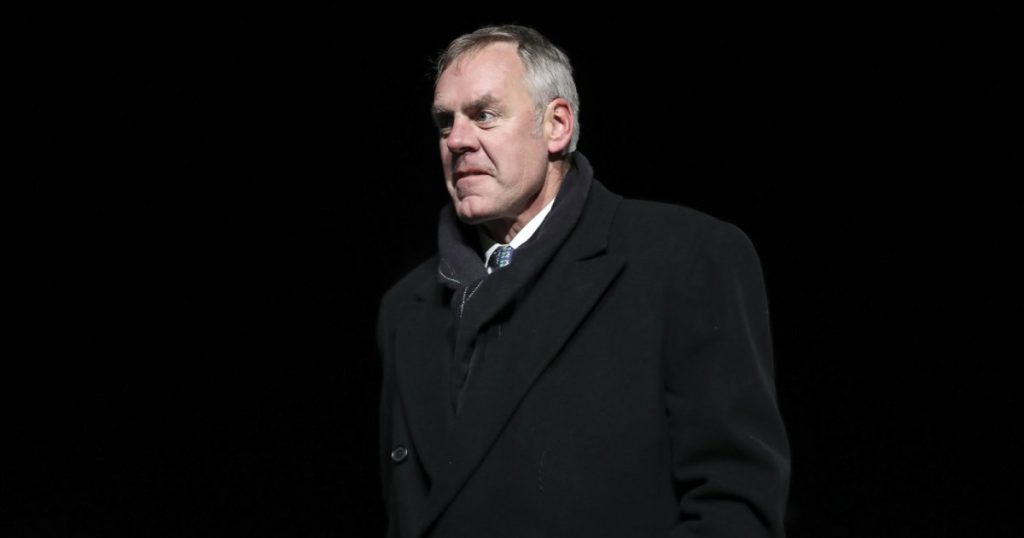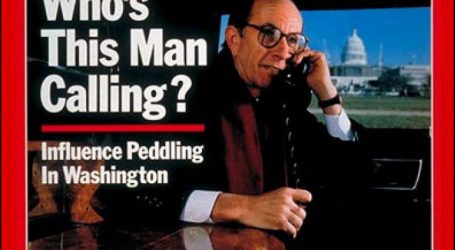Ryan Zinke’s Real Legacy Is Rolling Back Environmental Protections and Cozying Up to Big Oil
In other words, the grand pivot never arrived.
Theodore Roosevelt IV, a great-grandson of the late president who has blasted the interior secretary for invoking his ancestor, said Zinke’s “bad angels won out.”
“He was marching lockstep with what the president wanted him to do,” Roosevelt said. “It’s unfortunate.”
Zinke “disrespected Interior’s stewardship mission & its dedicated career staff,” David Hayes, Interior’s deputy secretary under Obama, said on Twitter.
The Interior Department did not respond to HuffPost‘s request for an interview with the secretary.
The lengths to which Zinke went to ensure a better future for coal, oil, gas, and mining interests are impressive. He overturned an Obama-era moratorium on new coal leases on federal land and scrapped a hydraulic fracturing rule meant to protect public health. He rolled back an Obama-era rule limiting the amount of methane, a powerful greenhouse gas, that can be released from oil and gas operations on federal and tribal lands. He proposed opening nearly all US waters to offshore drilling, and moved to weaken key offshore safety regulations adopted in the aftermath of the devastating Deepwater Horizon oil spill. In fiscal 2018, Interior offered more than 12.8 million federal acres for oil and gas leasing, “triple the average offered during President Barack Obama’s second term,” the New York Times reported. That’s an area more than twice the size of Maryland. Some of those leases sold for as little as $1.50 per acre, according to a Times investigation.
The oil and gas industry, a top donor to Zinke’s congressional campaigns, applauded the secretary at nearly every turn. Thomas Pyle, president of the American Energy Alliance, said Zinke “served the country in a way we haven’t seen from the federal government’s land use agency since the days of President Ronald Reagan.”
Thomas Pyle, president of the American Energy Alliance, said Zinke “served the country in a way we haven’t seen from the federal government’s land use agency since the days of President Ronald Reagan.”
“Most importantly, Zinke has unleashed American energy potential by tapping into the vast resource reserves on federal lands and opening up previously unexplored areas to development,” Pyle said in a statement.
Perhaps just as controversial as Zinke’s fossil fuel push were his actions targeting already protected lands. Whereas Roosevelt protected more than 230 million acres of federal land by establishing five national parks, 18 national monuments, and dozens of national forests, wildlife refuges, and bird reserves, Zinke led the largest reduction of national monuments in American history. Last December, on Zinke’s recommendation, Trump cut a collective 2 million acres from a pair of Utah national monuments, Bears Ears and Grand Staircase-Escalante. The move opened the door for oil, mining, and other development. Zinke maintained that the rollbacks were not about energy or mineral extraction, but reporting by the Washington Post, the New York Times, and other outlets paints a different picture. A Canadian firm has since unveiled plans to mine copper on land stripped from Grand Staircase-Escalante. And despite Zinke’s repeated assurances that the administration would not sell or transfer federal lands, the Bureau of Land Management proposed pawning off more than 1,600 acres of former Grand Staircase-Escalante land, as HuffPost first reported. The agency ultimately scrapped that proposal.
Along the way, Zinke peddled industry talking points, misinformation, and climate change denial. In a May 2017 op-ed, he argued that natural areas can benefit from resource extraction. He claimed California’s catastrophic wildfires have “nothing to do with climate change”—then later said “of course” it was a factor, without acknowledging the role humans play. And he repeatedly cast doubt on the latest federal climate assessment, which found that greenhouse gas emissions have put the planet on a trajectory toward catastrophic climate change.
He also became a pincushion of ethics probes and unfavorable headlines. He insisted a special flag fly above the agency’s headquarters each time he walked through the door, which his team claimed was “a major sign of transparency.” He accused 30 percent of Interior employees of not being “loyal to the flag,” and told an oil and gas industry association that “our government should work for you.” And he called a top Democratic lawmaker a drunk after he called for Zinke’s resignation.
In the end, Zinke’s exit was much like his entrance. He said little about protecting America’s natural heritage, but he spoke glowingly of oil. His final acts as secretary included pushing the administration one step closer to opening Alaska’s fragile Arctic National Wildlife Refuge to oil and gas drilling, which he said “stands out among the most impactful” Interior accomplishments in terms of “bolstering America’s economic strength and security.” (That claim about the economy is highly debatable.) He unveiled a plan to dismantle Obama-era protections for the greater sage grouse, a move that would open up millions of acres of the declining game bird’s habitat to energy and mineral development. When a US Geological Survey assessment identified an ocean of previously undiscovered oil and gas reserves in the Permian Basin under Texas and New Mexico, Zinke rejoiced. “Christmas came a few weeks early,” he said.
There were moments in his final month in office when Zinke sounded like a modern-day Daniel Plainview, the fictional oilman played by Daniel Day-Lewis in the film There Will Be Blood. “We’ve gotten a lot better as industry,” Zinke told the National Petroleum Council at its December 4 meeting, quickly correcting himself: “You’ve gotten a lot better.” He told the room he was “bullish” on energy, saying he expected that within two years the United States would be “marching real close to” producing 14 million barrels of oil per day. He stressed that Interior needs to “be better at emphasizing” why domestic energy production is “environmentally, morally, economically” the “right path.”
It was as if he were interviewing for his next gig. And that very well may have been the case. Politico reported in November that Zinke had reached out to various parties about potential jobs, including with Fox News and in the energy industry. Zinke’s team dismissed the report as fake news.
O’Mara, the National Wildlife Federation president, expects Zinke will end up working in the fossil fuel sector.
“He decided that it was in his interest to focus on fulfilling industry’s desires over the mission of the department,” O’Mara said.
In a parting interview with Fox News’ Bret Baier, Zinke was asked about the perceived one-sidedness of his agenda. Zinke dismissed such claims as “bunk” and attempted to do some damage control, highlighting achievements he said the media refuses to talk about. His list was largely the same one from a year before.
“We’ve opened up millions of acres for public access, hunting, and fishing. We’ve opened up 39 wildlife refuges,” he told Fox. Doing so is not unique to this administration. In its final two years alone, the Obama administration expanded hunting and fishing opportunities on at least 34 refuges.
“We expanded wilderness,” Zinke said. But only one wilderness area—Sabinoso Wilderness in New Mexico—expanded as a result of Zinke’s actions. And that deal was first announced in 2016, well before his tenure, and made possible thanks to a private donation of 3,595 acres. Zinke simply accepted the land donation.
“We’ve initiated wildlife corridors, first ever,” Zinke said. In February, he signed an order to identify and protect big game migration corridors. That initiative has been widely celebrated, but the BLM has continued to offer oil and gas leases in key habitat.
“I’ve withdrawn minerals in sensitive areas,” Zinke said. In October, he extended a mining ban on 30,000 acres in Montana’s Paradise Valley, just north of Yellowstone National Park. It is one of several cases of Zinke protecting public lands in his home state as he’s worked to open up land elsewhere. (There is wide speculation that Zinke has future political aspirations, perhaps for Montana governor.) Last year, for example, Interior reversed an Obama-era decision and renewed leases for a Chilean firm to mine nickel and copper just outside Minnesota’s Boundary Waters Canoe Area Wilderness.
“What they don’t say,” Zinke said of his critics, “is, actually, we are one of the leading conservationists.”
It’s a bold claim for any administration, let alone one that in the midst of global biodiversity and climate crises has prioritized fossil fuel development and worked to chip away at bedrock conservation laws, namely the Endangered Species Act and the Migratory Bird Treaty Act.
In recent months, as the cloud of ethical troubles darkened and rumors swirled that his future was in peril, Zinke took to accusing critics on the left of being “angry,” “intolerant,” “uninformed” and unwilling to “look at the actual facts.” He echoed that sentiment in his resignation letter to Trump, saying that “to some, truth no longer matters.”
But the truth about Zinke is that he isn’t the Rooseveltian conservationist he sold himself as. Donning a cowboy hat doesn’t make a person a cowboy any more than flying a special flag over an office makes someone transparent.
“He talked a really good game going in and then just was a good soldier,” Tawney, the president of Backcountry Hunters & Anglers, said. “You can’t go in there and talk about how you’re a Theodore Roosevelt Republican, a student of Theodore Roosevelt, and do the things that he did.”
Somewhere, Tawney said, America’s conservationist president “is shaking his fist.”





